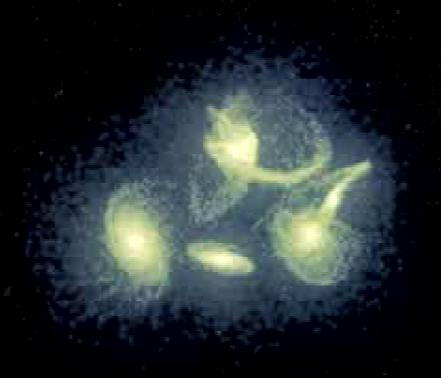
| 
| 
| 
| 
| 
| 
| 
| 
| 
| 
|

| 
| 
| 
| 
| 
| 
| 
| 
| 
| 
|
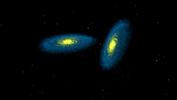
Galaxy collision simulation by Matteo, Springel and Hernquist showing
how the gas clouds behave over a period of 2 billion years. The color
of the gas clouds indicate their temperature, from cool (blue) to
hot (yellow). Click on the image below to start the simulation.
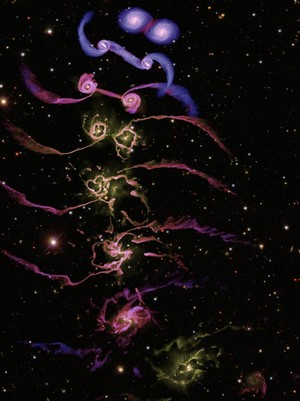
More information.
Detailed galaxy collision simulation by Volker Springel showing the
same collision twice: once for just the gas clouds, and a second time
for just the stars. Click on the image below to start the simulation.
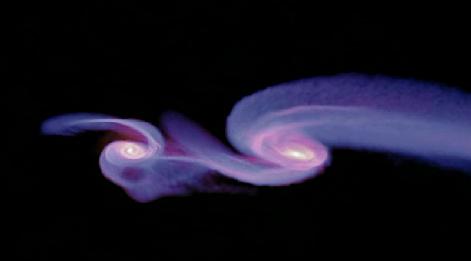
The great Andromeda-Milky Way collision
View how our night sky will change as the Milky Way and the Andromeda
galaxy approach each other as a result of their mutual gravitational
attraction. In this simulation the camera is continuously pointed at
the center of our galaxy in an all-sky view of events. Sit back,
watch us closing in on the Andromeda galaxy, and hold on tight, as
our Solar system is going to go on quite a ride! Click on the image
below to start the simulation.
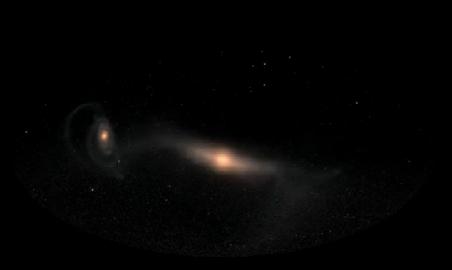
More information
